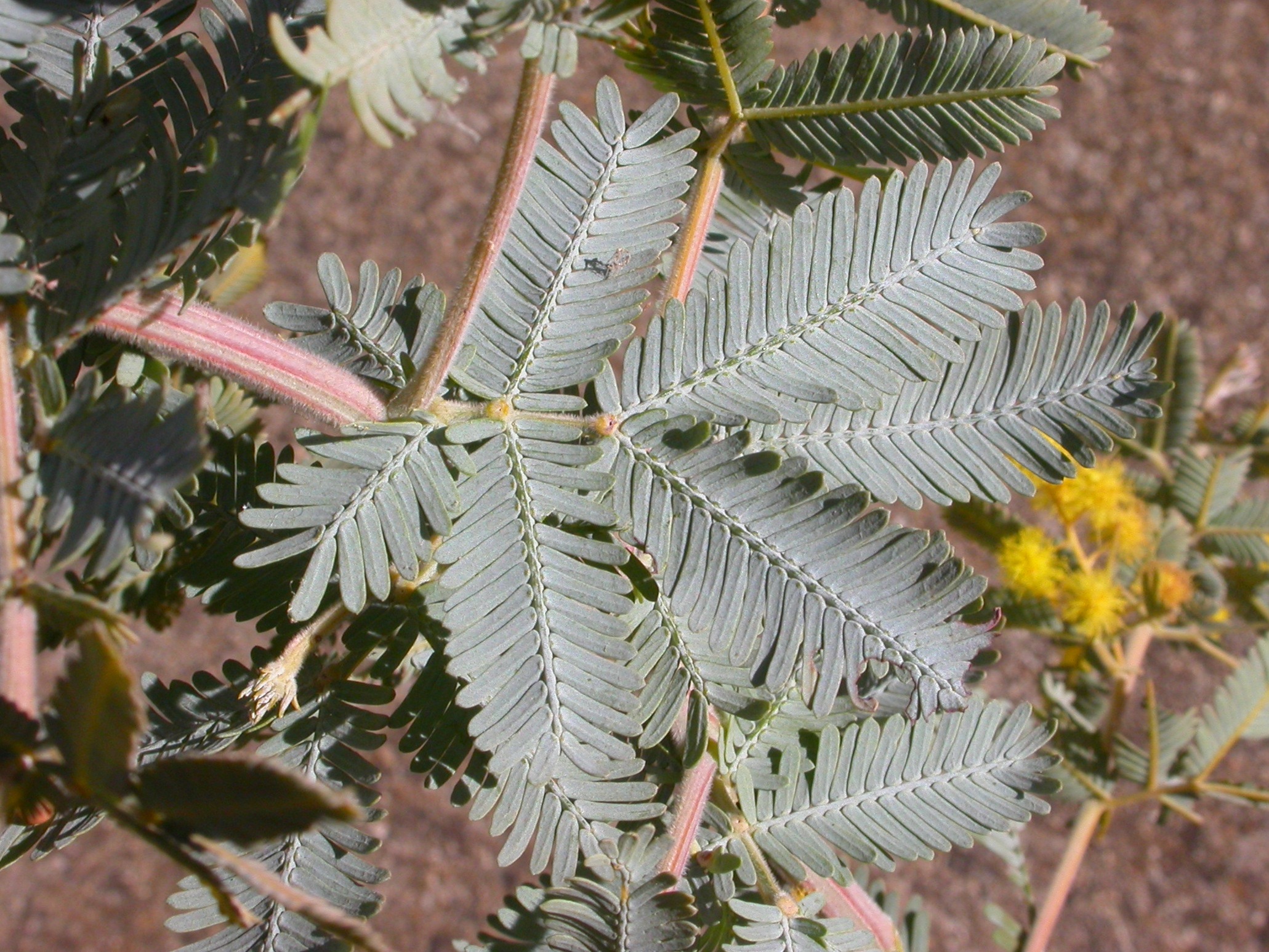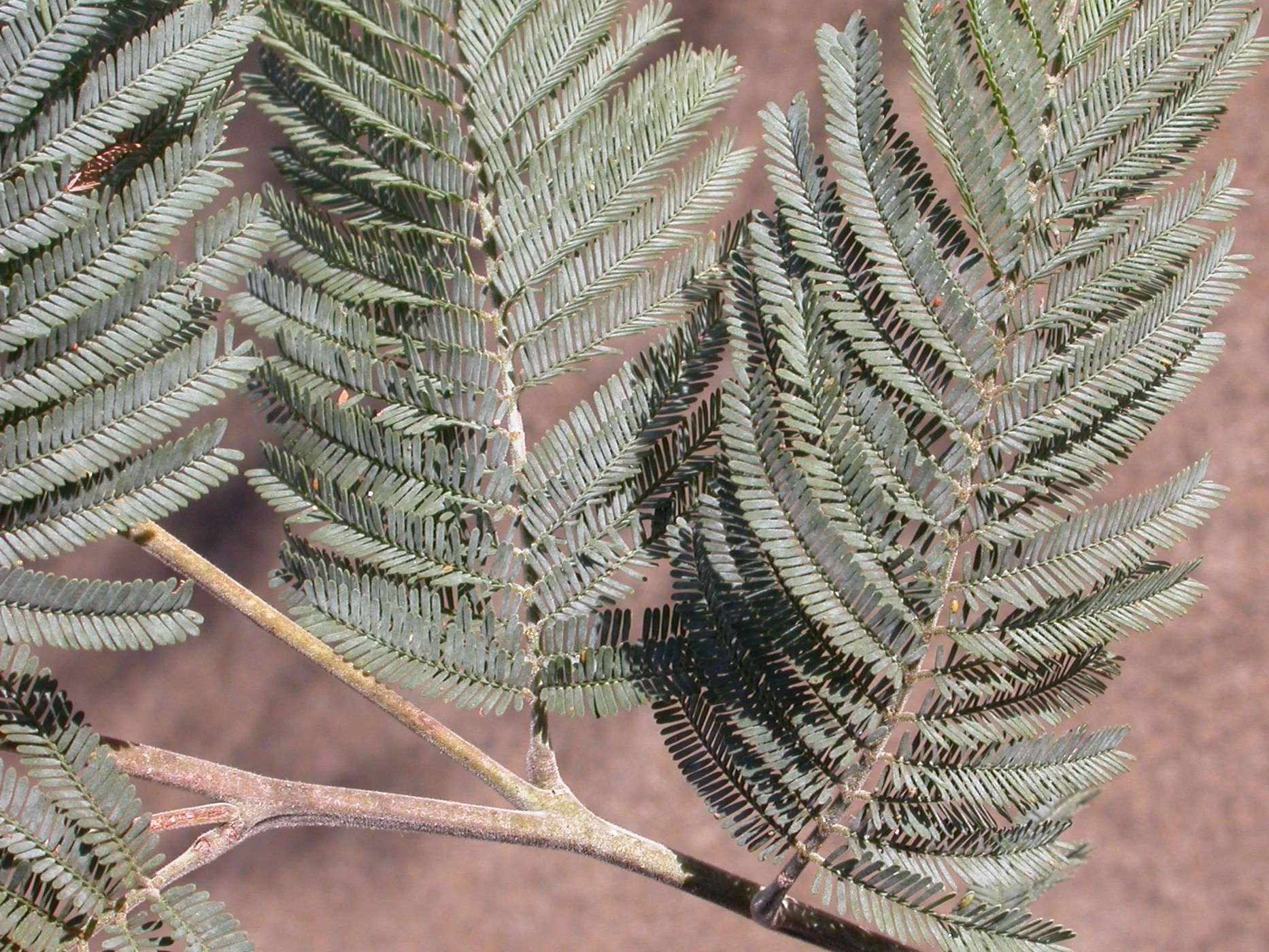
The leaf of the introduced Cootamundra Wattle (Acacia baileyana), consists of three or four pairs of leaflets; the pair closest to the stem to which the leaf is attached points backwards embracing the stem and is shorter than the other leaflets.

Leaves of Silver Wattle (Acacia dealbata), a local species that may be confused with the introduced Cootamundra Wattle. The leaf of a Silver Wattle consists of many leaflets of more or less the same length and the pair close to the stem is not pointing backwards. For further info on how to distinguish between the introduced Cootamundra Wattle and the local Silver Wattle: https://majura.org/woody-weeds-working-party-20112011/
Join the Friends of Mt Majura work party to follow up on the control of woody weeds in the nature reserve behind Mackenzie Street. The targets will be Cootamundra Wattle and Sweet Briar Rose and any non-native garden escape that we can reliably identify.
With the end of daylight saving, we switch our work parties on the third Sunday each month to the afternoon to make use of the warmer part of the day; we hope this suits people to come along.
When: Sunday 18 April, 1pm to 4pm; please arrive early for an introduction of the control method and target weeds.
Where: Meet at the nature park entry Mackenzie Street roughly opposite Grayson Street; view this map
Bring and wear: Sun protection, body-covering clothing, sturdy shoes and drinking water.
We will provide tools, hand sanitiser and a delicious cake.
What: This will be a search and destroy exercise to remove the regrowth of a range of woody weeds that we treated in the area over the past 15 years; click on FoMM’s Woody Weed Gallery to view images of common woody weeds that occur on Mt Majura.
Chemical control of woody weeds using the cut & daub method.
Cut stems close to ground level and immediately treat cut surface with herbicide glyphosate (Roundup or equivalent product) applied at high concentration i.e. 1 part glyphosate : 2 parts water; apply herbicide mix with a hand-spray or paint the cut surface with a suitable device.
The plant’s natural protective mechanism acts very quickly to seal off the cut surface and this stops herbicide penetration into the sap stream. It is therefore important to treat the cut surface immediately, i.e. within 30 seconds after cut; the longer the treatment is delayed, the poorer the result will be. If necessary cut and daub each stem of multi-stemmed plants separately to avoid delayed herbicide treatment.
Enquiries: projects@majura.org.
Visit the following links with information on
Garden plants going bush:
https://majura.org/woody-weeds/
How to distinguish between an introduced Cootamundra Wattle and a local Silver Wattle: https://majura.org/woody-weeds-working-party-20112011/


